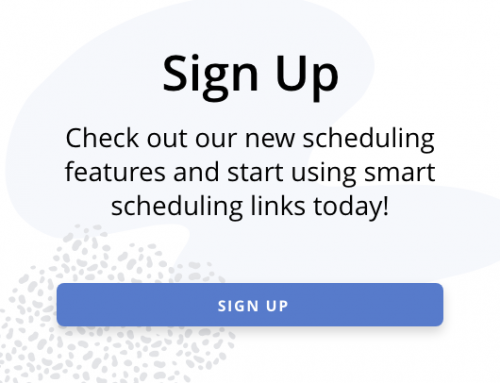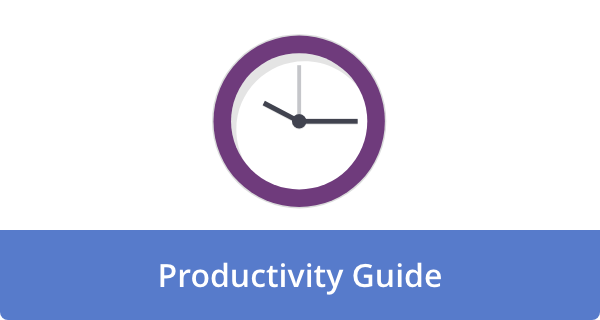

As winter winds down and the days grow longer, many of us find ourselves emerging from a season of slow movement, cozy retreats, and perhaps even a little lethargy. After all, in the colder months, hibernation-like habits are more common—shorter days mean less motivation, and staying indoors can reduce productivity. As spring approaches, it’s time to shake off the winter blues and rekindle your drive.
As such, here’s how to seamlessly transition from winter downtime to heightened energy and productivity.
1. Reset Your Mindset: Shedding the Winter Slumber
To begin with, let’s talk about the mental shift. Why? As the winter sets in, we tend to retreat into a state of rest. The only way to re-energize ourselves is to nudge ourselves out of this mindset by gently;
- Acknowledge the transition. It’s okay to feel a little slow sometimes. Accept that your body and mind have been in a slower rhythm. You should permit yourself to ease back into things. It’s like waking up from a long, restful sleep; you don’t jump out of bed sprinting.
- Set fresh intentions. Let go of overwhelming to-do lists that make you want to crawl back under the covers. Rather than setting big goals, aim for small, attainable ones. It’s like planting seeds; every small accomplishment will increase productivity.
- Visualize success. For a few minutes each day, close your eyes and imagine yourself accomplishing tasks effortlessly. Imagine how rewarding it would be to complete a project successfully and have a productive day. As winter stagnates, mental rehearsal can stimulate spring momentum.
2. Adjust Your Sleep Schedule: Aligning with the Sun
Winter’s long nights may throw off our sleep patterns. To recover energy, we need to sleep according to the rising and setting of the sun.
- Gradual adjustments. Don’t expect to become a morning person overnight. Daily, shift your bedtime and wake-up time by 15-30 minutes. It’s like turning a dial, not flipping a switch.
- Morning sunlight exposure. You need to open those curtains. Natural light powerfully regulates our circadian rhythm. Even if you just want to sit on your porch and sip your coffee for a few minutes in the morning, get outside for a few minutes.
- Evening wind-down routine. Before you go to bed, turn off the screens. If you want to relax, read a book, listen to soothing music, or meditate gently. Your body will feel it is time to rest when you create a peaceful ritual.
3. Revamp Your Workspace: A Breath of Fresh Air
Several factors affect your productivity, including your environment. Now that winter is over, it’s time to refresh your workspace.
- Declutter and organize. Get rid of all the clutter, both physical and digital. Reorganize your desk, file those papers, and delete unnecessary files. After all, cleanliness is the key to a clear mind.
- Incorporate natural elements. Let nature into your home. If you have the space, you can add plants, flowers, or even a small water feature. Open a window to let in fresh air. In addition to boosting your mood, these natural elements can also boost your creativity.
- Upgrade your setup. Use ergonomic keyboards, comfortable chairs, and standing desks. Small upgrades can make a big difference in terms of comfort and productivity.
4. Ease Into Physical Activity: Moving Your Body, Reviving Your Mind
In the winter, we are often tempted to become couch potatoes. However, physical activity is essential for regaining energy and concentration.
- Start with gentle movement. Rather than jumping into a marathon, take it slow. Stretch, practice yoga, or go for a short walk to get your body moving again.
- Find an activity you enjoy. No matter what activity you choose, you should do what makes you happy, whether dancing, hiking, or swimming. This will make it easier to remain consistent.
- Set small, achievable goals. If you haven’t been active for a while, start small. Even a 10-minute walk is better than nothing. As you become stronger, increase the duration and intensity of the workout.
5. Prioritize Nutrition for Energy: Fueling Your Body Right
Eating winter comfort foods can make us feel sluggish. Now that spring is here, it’s time to feed our bodies with nutrient-rich foods.
- Increase hydration. When it’s cold outside, it’s easy to forget to drink enough water. Carry a water bottle with you to make a habit of drinking water throughout the day.
- Incorporate seasonal produce. Take advantage of the vibrant colors of spring produce. There are plenty of vitamins and minerals in berries, leafy greens, and citrus fruits that can boost your energy levels.
- Reduce processed sugars. Consider swapping sugary snacks for whole foods such as fruits, nuts, and yogurt. These will give you sustained energy without leaving you feeling drained.
6. Reignite Your To-Do List: Reclaiming Your Focus
When it comes to getting back on track, there is no substitute for structure. Reassess your priorities and set new goals.
- Review and reassess. Review what you accomplished during the winter and what needs to be done. Decide which tasks are most urgent and vital and prioritize them accordingly.
- Break tasks into manageable steps. When tasks become overwhelming, procrastination can occur. It will be easier to manage them if you break them down into smaller, more manageable chunks.
- Use productivity tools. Apps such as Trello, Notion, or Todoist can help you keep track of your tasks and stay motivated.
7. Embrace the Outdoors: Recharging in Nature
As the weather warms, more time can be spent outdoors;
- Take outdoor breaks. Improving your mood and mental clarity only takes 10-15 minutes outside.
- Work outside when possible. Depending on your job, you may be able to work in a park or on a patio. Getting some fresh air and sunshine can boost creativity and productivity.
- Incorporate nature into your routine. Connecting with nature can be achieved through gardening, hiking, or walking in a green space. These activities can reset the mind.
8. Cultivate Social Connections: Re-engaging with Others
During the winter, many people hibernate socially. Get in touch with friends, family, and colleagues.
- Reconnect with friends and colleagues. You may want to schedule coffee dates, lunches, or virtual meet-ups. Interaction boosts your positive mood and motivation.
- Join a group or class. Whether you join a fitness group, book club, or professional organization, you’ll receive support and accountability.
- Collaborate on projects. Getting along with others can rekindle your creativity and make your work more enjoyable.
9. Create a Sustainable Routine: Building Long-Term Habits
To maintain productivity, you must establish habits that are realistic and sustainable.
- Start small and build momentum. Be careful not to take on too much too soon. Rather than focusing on intensity, focus on consistency.
- Schedule breaks. You need to rest just as much as you need to be productive. During the day, take short breaks to prevent burnout.
- Track progress. A journal or app that tracks your accomplishments can motivate you and boost your sense of achievement.
10. Be Kind to Yourself: Embracing the Process
Last but not least, remember that transitions take time. Take care of yourself with patience and compassion.
- Avoid perfectionism. Rather than striving for perfection, we should strive for progress. Be proud of your small wins; don’t let setbacks get you down.
- Stay flexible. We live in an unpredictable world. You should adjust your routine based on your progress and focus on steady improvement.
Conclusion
To emerge from winter hibernation, we must be intentional and compassionate with ourselves. It is possible to reignite productivity in spring by reflecting on past habits, setting clear goals, and cultivating an energizing routine.
Take advantage of this seasonal transition to refresh your focus, boost your energy, and move forward with a new sense of purpose.
FAQs
Why does my productivity tend to dip during winter?
- Reduced sunlight. When you get less sunlight, your circadian rhythm can be disrupted, affecting your sleep patterns and mood. In turn, this can reduce motivation and energy levels.
- Seasonal Affective Disorder (SAD). Symptoms of SAD, a type of depression linked to seasonal changes, can significantly impact productivity.
- Holiday burnout. Although the holiday season can be joyful, it can also be stressful and draining, leading to post-holiday fatigue.
- Hibernation mode. During winter, it is natural for people to slow down, resulting in a less active lifestyle and negatively impacting focus.
- Colder weather. When the weather gets colder, people are less likely to be active outdoors and more likely to engage in indoor, sedentary activities.
How can I combat post-winter fatigue?
- Increase your exposure to sunlight. If you can, spend some time outdoors during daylight hours. If you suffer from SAD, consider using a light therapy lamp.
- Prioritize sleep. Get into a regular sleep schedule and create a relaxing bedtime routine. It is recommended that you sleep for 7-9 hours each night.
- Healthy diet. Choose foods high in nutrients, such as fruits, vegetables, and whole grains. Avoid excessive sugar and processed foods, which can lead to energy crashes.
- Regular exercise. Even moderate exercise, such as a brisk walk, benefits energy levels and mood.
- Hydration. Throughout the day, drink plenty of water to stay hydrated and energized.
How do I get back into a productive routine?
- Start small. Make changes to your routine one at a time instead of trying to overhaul everything at once. Become familiar with small, manageable tasks before gradually increasing your workload.
- Set realistic goals. The first step to completing a large project is to break it down into smaller, achievable steps. Use the SMART goal framework (Specific, Measurable, Achievable, Relevant, Time-bound).
- Use a task management app to prioritize your tasks. Remember to prioritize the most critical and urgent items.
- Time blocking. Block out specific times for different tasks and avoid distractions to stay focused.
- Create a productive workspace. Eliminate clutter. Adequate lighting and a comfortable environment are also important.
What can I do to regain my motivation?
- Reflect on your goals. Keep an eye on your long-term goals and see how your daily tasks contribute to them.
- Find inspiration. Get inspired by reading inspirational books, listening to motivational podcasts, or watching TED Talks.
- Reward yourself. Remember to celebrate your achievements, no matter how small. After you have completed a challenging task, treat yourself to something you enjoy.
- Connect with others. You should surround yourself with positive and supportive people. Let a friend or mentor know what your goals are and how you are progressing.
- Practice gratitude. Take a moment to appreciate what is good in your life every day. This will help you shift your focus and boost your mood.
How can I use the spring season to boost my productivity?
- Spring cleaning. Create a fresh, organized environment by decluttering your home and workspace.
- Outdoor activities. Enjoy the warmer weather by spending more time outdoors. Hiking, gardening, and cycling are among the activities you can engage in.
- Set new goals. Take advantage of spring to set new goals and develop a plan to achieve them.
- Embrace fresh starts. Spring symbolizes growth and renewal. Use this time to reevaluate your priorities and make positive changes.
- Connect with nature. In terms of mental health, nature has been proven to be beneficial. As such, let the changing of the seasons inspire you, and enjoy the beauty of spring.
Image Credit: Janko Ferlic; Pexels











John Hall
John Hall is the co-founder of Calendar a scheduling and time management app. He’s also a keynote speaker that you can book at http://www.johnhallspeaking.com.